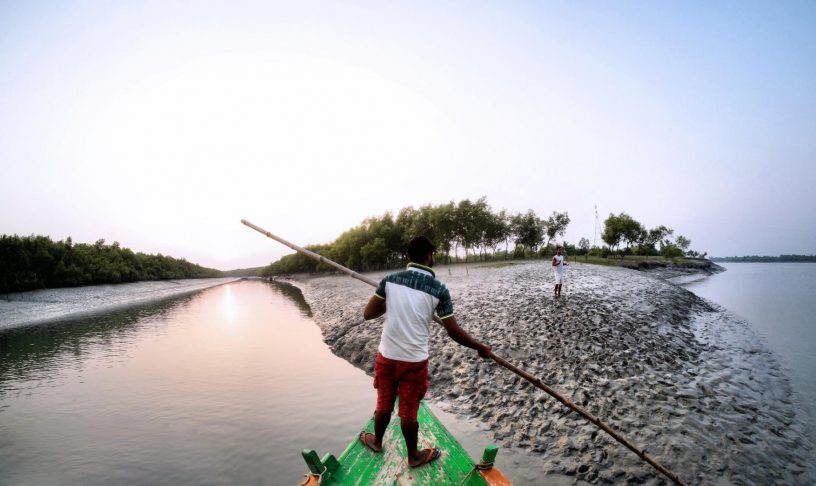
The researchers assessed the effectiveness of a community managed mangrove plantation in ameliorating disaster impacts at Indian Sundarbans.
Authors
Abhiroop Chowdhury, Jindal School of Environment and Sustainability, O.P. Jindal Global University, Sonipat, Haryana.
Aliya Naz, Department of Environmental Science & Engineering, Indian School of Mines, Dhanbad, Jharkhand; Tagore Society for Rural Development, 46 B, Shri Aurobindo Sarani Road, Darjipara, Shobhabazar, Kolkata, West Bengal.
Aparna Shankar Iyer, Jindal School of Environment and Sustainability, O.P. Jindal Global University, Sonipat, Haryana.
Santanu Bhattacharyya, Tagore Society for Rural Development, Kolkata, West Bengal, India.
Summary
Due to climate change and impact of sea level rise at the Ganges- Brahmaputra- Meghna delta, the Sundarbans, a UNESCO world heritage site, is now bearing the brunt of natural disasters at an increased frequency. This can be gauged from data which showed that although there had been a consistent increase in total agricultural land of Indian Sundarbans, from 1990 to 2006 (from 16.9% to 20.9%), due to problems related to climate change and sea level rise problems, the figure slumped to 16.3% in 2013.
In the midst of the COVID-19 pandemic, the region was hit by a devastating super cyclone, AMPHAN, between 16-21st May 2020. According to an official report, about 28% of the Sundarban area was devastated by this cyclone and 1200 sq km of mangrove reserve forest impacted out of 4263 sq km.
This study by researchers at O.P. Jindal Global University in Haryana, Indian School of Minesin Jharkhand and Tagore Society for Rural Development in West Bengal took place in the aftermath of the AMPHAN super cyclone. The researchers assessed the effectiveness of a community managed mangrove plantation in ameliorating disaster impacts. It is worth noting that as a part of a climate change resilience project initiated in 2012, over 100 hectare of multispecies mangrove plantation was established at eastern corner of Indian Sundarbans.
For the study, the researchers conducted on-site visits and in-depth interviews with the villagers residing along the mangrove protected river banks. A total of 65 respondents expressed their views during the month of June 2020. While 25 respondents were from houses protected by the mangrove cover, another 25 belonged to families from different parts of the nearby islands without mangrove cover. A total of 16 members of an NGO working on the relief activity just after the cyclone were also interviewed. The researchers also conducted literature review and study of official documents.
The study showed that the flooding during the aftermath of the cyclone was considerably lower in the houses along the vicinity of the mangrove plantation cover.
The mangrove bio-shield checked the breaching of earthen embankments by 60% and led to lesser flooding, the findings showed.
“The area was not flooded during the storm because of the mangrove bioshield. Most of the respondents (23 out of 25), residing away from the mangrove cover reported massive damage to their houses and ponds during the cyclone incident,” the researchers wrote.
Only five respondents from the mangrove sheltered region reported such damage, according to the study which said that mangrove cover acted as a bio-shield against the strong winds and has reduced the wind speed during this disaster.
“Community managed mangrove plantations proved to be an effective barrier against vagaries of the disaster. Hence, mangrove plantation should not only be promoted as an initiative to sequester ‘blue carbon’ but to build disaster resilience along the coastline,” the researchers wrote.
Published in: IOP Conference Series: Earth and Environmental Science, Volume 796
To read the complete research paper, please click here


